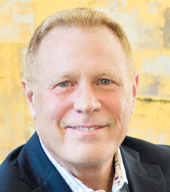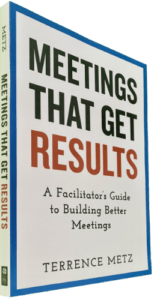Most people are confused about the difference between a mission and a vision. An MBA grad from a prestigious east-coast USA school told us that he “learned more about strategic planning in the past two hours than during my entire MBA curriculum.”
While humbled, we are not surprised. Since most people are confused about the difference between the terms ‘mission’ and ‘vision’. Their confusion is made greater by some of the famous minds of our ‘liberal’ academic world. Sometimes it’s their opponent, the ‘conservative’ military-industrial complex. The confusion became stronger by some of the world’s largest and most influential consulting firms. The same ones that have brought us over 20 types of roles and responsibilities tools. Those include RACI, RASI, RASCI, ARCI, etc. (see Transform Your Responsibilities Matrix into a GANTT Chart).
In fact, the argument may be ended quickly by not using the terms mission and vision. If you seek to end the confusion, substitute the questions they attempt to answer. One term represents sentiment that answers the question “Why do we show up (or, Why are we here?)?” The other term represents sentiment that answers the question “Where are we going?” With this logic, the natural order is to know where we are before we discuss where we are going.
Academic vs. Military-industrial

Mission or Vision?
In many textbooks, strategic planning begins with the mission (i.e., Why are we here?). It then yields to vision (i.e., Where are we going?). The military-industrial complex answers the same questions, in the same order, but defines the terms differently. Note that NATO armed forces have a vision. “Liberty and independence for all” explains their existence. When threatened, however, they go forth on a “mission to (insert location; e.g., Iraq).”
A versatile facilitator remains agnostic. They are biased toward one definition over the other. They are biased however to maintain consistency within the organization and culture they are serving. Since confusion exists in most organizations, an important part of the preparation activity involves building the glossary for your meetings and workshops that homogenizes operational definitions and ensures that they are applied consistently, within and between your meetings and workshops.
______
Don’t ruin your career by hosting bad meetings. Sign up for a workshop or send this to someone who should. MGRUSH workshops focus on meeting design and practice. Each person practices tools, methods, and activities every day during the week. Therefore, while some call this immersion, we call it the road to building high-value facilitation skills.
Our workshops also provide a superb way to earn up to 40 SEUs from the Scrum Alliance, 40 CDUs from IIBA, 40 Continuous Learning Points (CLPs) based on Federal Acquisition Certification Continuous Professional Learning Requirements using Training and Education activities, 40 Professional Development Units (PDUs) from SAVE International, as well as 4.0 CEUs for other professions. (See workshop and Reference Manual descriptions for details.)
Want a free 10-minute break timer? Sign up for our once-monthly newsletter HERE and receive a timer along with four other of our favorite facilitation tools, free.

Terrence Metz, president of MG RUSH Facilitation Training, was just 22-years-old and working as a Sales Engineer at Honeywell when he recognized a widespread problem—most meetings were ineffective and poorly led, wasting both time and company resources. However, he also observed meetings that worked. What set them apart? A well-prepared leader who structured the session to ensure participants contributed meaningfully and achieved clear outcomes.
Throughout his career, Metz, who earned an MBA from Kellogg (Northwestern University) experienced and also trained in various facilitation techniques. In 2004, he purchased MG RUSH where he shifted his focus toward improving established meeting designs and building a curriculum that would teach others how to lead, facilitate, and structure meetings that drive results. His expertise in training world-class facilitators led to the 2020 publication of Meetings That Get Results: A Guide to Building Better Meetings, a comprehensive resource on effectively building consensus.
Grounded in the principle that “nobody is smarter than everybody,” the book details the why, what, and how of building consensus when making decisions, planning, and solving problems. Along with a Participant’s Guide and supplemental workshops, it supports learning from foundational awareness to professional certification.
Metz’s first book, Change or Die: A Business Process Improvement Manual, tackled the challenges of process optimization. His upcoming book, Catalyst: Facilitating Innovation, focuses on meetings and workshops that don’t simply end when time runs out but conclude with actionable next steps and clear assignments—ensuring progress beyond discussions and ideas.



